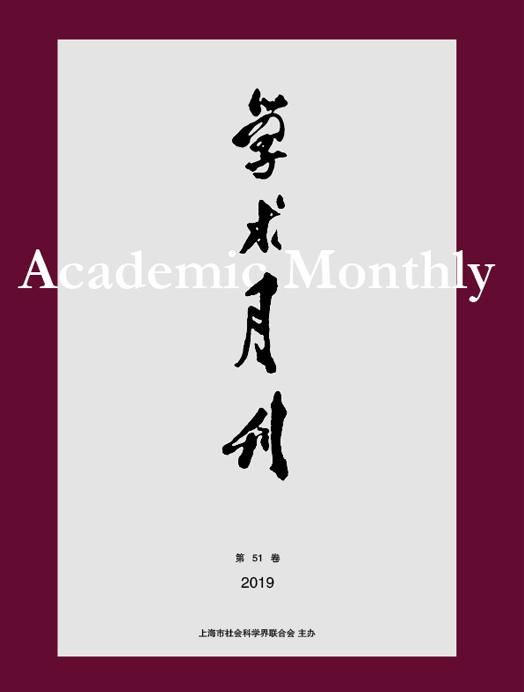Citation:
Shu WANG and Lijia SHEN. Intergenerational Characteristics and Spiritual Trajectory of Youth Image Writing in the New Century[J]. Academic Monthly, 2021, 53(11): 177-185.

Intergenerational Characteristics and Spiritual Trajectory of Youth Image Writing in the New Century
-
Abstract
Since the new century, the phenomenon of writing about “failed youth”, with the post-70s and post-80s as the main force, has continued the narrative pattern of “country people entering the city” in literary history, not only shaping a category of “new poor” in the city under “personal struggle”, but also creating a new type of character of the times that fits the increasingly obvious solidification of social classes−the “no thought for improvement” youth, also showing the transformation trajectory from the “personal struggle” to the “no thought for improvement” youth image. Such writing tries to dig into the pains of the souls of failed youths, hitting their spiritual anxiety, identity crisis and spiritual emptiness under the hopelessness of “personal struggle”, thus pointing out the shortcomings of today’s social development. However, the writing of the youth image is too much indulged in the appearance of life, which leads to cliché and pattern, and the thinking of the key issue of the times, the relationship between youth and society, is still not deep.
-

-
References
-
Access
-
-
[1]
Fan NAN
. Intergeneration and Class: Theoretical Coordinates of Youth Image. Academic Monthly,
2018, 50(10): 118-129.
-
[2]
Bing SANG
. New Youth and the New Culture Movement. Academic Monthly,
2020, 52(5): 163-184.
-
[3]
Li JIN
. Seventeen-Year-Old Light Cavalry and the Structure of Feelings of the Youth in the 1990s. Academic Monthly,
2020, 52(4): 129-141.
-
[4]
Yu Haibing
. . Academic Monthly,
2018, 50(5): 172-184.
-
[5]
Jiaxin ZHOU
. How did Young Marx Criticize Hegel. Academic Monthly,
2022, 54(8): 16-24.
-
[6]
Yuefeng ZHOU
. From Revolution to Reform: Reorganizing The Emancipation and Reconstruction Semi-monthly and the Progressive Orientation of the Liang Qichao School. Academic Monthly,
2021, 53(12): 182-194.
-
[7]
Shuisheng CHEN
. Public Policy Failure and Its Prevention: An Integrated Analysis Framework. Academic Monthly,
2022, 54(2): 91-102.
-
[8]
Fuping GAO
. The Protection of Individuals with Regard to Processing of Personal Information. Academic Monthly,
2021, 53(2): 107-124.
-
[9]
Lesong CHENG
. To Understand Difference from Writing Mode. Academic Monthly,
2019, 51(12): 24-32.
-
[10]
Jie HU
. Individual Narrative and Collective Memory: Sociological Construction of Oral History. Academic Monthly,
2021, 53(11): 140-146.
-
[11]
Chunzhen GUO
, Haiyang WANG
. Normative Structure of the Right to Erasure in Personal Information Protection. Academic Monthly,
2022, 54(10): 92-106.
-
[12]
Xiaohong ZHOU
. Collective Memory: Community of Fate and Social Construction of Individual Narrative. Academic Monthly,
2022, 54(3): 151-161.
-
[13]
HAN Siyang
. Public Law Intervention in Private Domain: Personal Information Protection in Platforms. Academic Monthly,
2023, 55(5): 106-119.
-
[14]
. . Academic Monthly,
2016, 48(01): 139-148.
-
[15]
Xianbin YANG
. Normative Explanation and Systematic Construction of Rules of Processing of Sensitive Personal Information in China. Academic Monthly,
2022, 54(10): 107-119.
-
[16]
Juyuan CHEN
. The Writing of Confucian Classics in Eight-legged Essay in Qing Dynasty. Academic Monthly,
2023, 55(3): 22-34.
-
[17]
ZHANG Wei, LYU Chenggang
. Visual Rhetoric and “Liberation” Writing in ChinChaChi Pictorial. Academic Monthly,
2023, 55(7): 152-162.
-
[18]
Zhichang PAN
. The Aesthetic Discourse of “Egoistic Thrusters”. Academic Monthly,
2021, 53(6): 195-204.
-
[19]
Xin YU
. Knowledge, Belief and Political Order: The Historical Writing of Aurora in the Medieval World. Academic Monthly,
2022, 54(12): 176-190.
-
[20]
ZHANG Zhenguo
. A Study on Daofu Asking for Instructions and Daily Government Affairs in the Qing Dynasty— Also on Instructions Writing and Its Characteristics. Academic Monthly,
2023, 55(5): 202-216.
-
-



 沪公网安备 31010102003103号
沪公网安备 31010102003103号 DownLoad:
DownLoad: